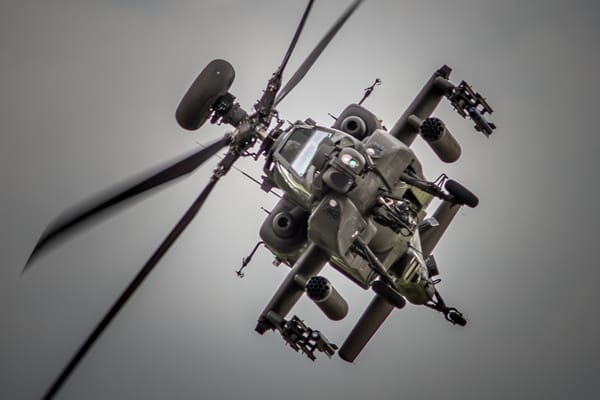🇷🇺 APT28. Fancy Bear

Overview
APT28, also known as Fancy Bear, Sofacy, STRONTIUM, and Sednit, is a Russian state-sponsored cyber espionage group that has been active since at least the mid-2000s. It is widely believed to be affiliated with Russia’s Main Intelligence Directorate (GRU), the country’s military intelligence agency.
APT28 specializes in cyber espionage, election interference, military intelligence gathering, and disinformation campaigns. It has been responsible for some of the most consequential cyber operations of the past decade, including the 2016 U.S. presidential election hack, cyberattacks on European government institutions, and operations targeting NATO and Ukrainian entities.
The group is known for its use of advanced malware, zero-day exploits, and social engineering tactics to infiltrate government, defense, and media organizations. Unlike financially motivated APTs, APT28’s operations are aligned with Russia’s geopolitical and military objectives, making it a key instrument of Russia’s hybrid warfare strategy.
Despite sanctions and countermeasures by the U.S., EU, and NATO, APT28 continues to evolve its tactics, expand its global reach, and play a significant role in Russia’s cyber warfare and influence operations.
Background and Attribution Indicators
APT28 was first publicly identified by cybersecurity firms such as FireEye (now Mandiant) and CrowdStrike in the early 2010s, though its operations date back to at least 2007.
Attribution to Russia
APT28 has been consistently linked to Russia’s GRU, with strong evidence indicating:
• Operational overlaps with GRU Unit 26165, the same unit implicated in election interference and military cyber espionage.
• Targeting patterns that align with Russian geopolitical priorities, particularly against NATO, the European Union, Ukraine, and Western democracies.
• Use of Russian-language malware and timestamps matching Moscow working hours.
• Involvement in Russian influence campaigns, including disinformation efforts in Ukraine, the U.S., and Europe.
APT28 is one of Russia’s most aggressive cyber units, often operating in conjunction with APT29 (Cozy Bear), which is linked to Russia’s Foreign Intelligence Service (SVR).
Focus
APT28 primarily targets entities that are of strategic interest to Russia, focusing on military intelligence, political influence, and strategic cyber warfare.
Primary Targets
1. Government and Military Institutions
• Espionage against NATO, U.S. and European military agencies, and Ukrainian defense networks.
2. Elections and Political Organizations
• Interference in Western elections, including hacking political parties, think tanks, and voter databases.
3. Media and Journalism
• Targeting journalists and news agencies to control narratives and leak compromised information.
4. Energy and Critical Infrastructure
• Gaining access to power grids, transportation networks, and satellite communication systems.
5. Private Sector and Aerospace
• Stealing technology blueprints, satellite data, and defense contractor research.
APT28’s operations align with Russia’s broader military and intelligence objectives, making it a key player in Moscow’s cyber warfare strategy.
Attack Vectors and Lifecycle
APT28 utilizes a highly structured attack lifecycle, relying on custom malware, phishing, and credential theft.
APT28’s Attack Lifecycle
1. Initial Access
• Spear-phishing emails targeting government officials, military personnel, and political figures.
• Credential theft attacks against government and corporate accounts.
• Exploitation of software vulnerabilities, including zero-day exploits.
2. Establishing Persistence
• Deploying custom backdoors (X-Agent, Sofacy, and Zebrocy) for long-term surveillance.
• Using living-off-the-land techniques to avoid detection.
3. Lateral Movement and Data Collection
• Compromising additional government, military, or corporate accounts.
• Extracting classified intelligence, strategy documents, and communications.
4. Data Exfiltration and Influence Operations
• Leaking sensitive data through Wikileaks, Telegram, or fake personas (e.g., Guccifer 2.0).
• Conducting disinformation campaigns to manipulate public opinion.
5. Covering Tracks and Evasion
• Using proxy networks and encrypted communications to evade detection.
• Constantly changing infrastructure to remain operational.
APT28’s hybrid approach—combining espionage with disinformation operations—makes it one of the most effective Russian cyber units.
Major Attacks and Impact
APT28 has been responsible for some of the most high-profile cyber operations of the last decade, influencing elections, military conflicts, and global political dynamics.
1. 2016 U.S. Presidential Election Hack
• APT28 hacked the Democratic National Committee (DNC) and Hillary Clinton’s campaign, leaking thousands of emails to influence the U.S. elections.
2. Cyber Attacks on NATO and European Governments (2014-Present)
• Espionage operations targeting NATO member states, aiming to undermine Western military alliances.
3. Ukraine Cyber Operations (2014-Present)
• Multiple attacks against Ukrainian military, government agencies, and infrastructure, supporting Russia’s geopolitical objectives in Ukraine.
4. French Election Interference (2017)
• Targeted Emmanuel Macron’s campaign, attempting to manipulate the French presidential election.
5. SolarWinds Supply Chain Attack (2020-2021)
• Although primarily linked to APT29 (Cozy Bear), APT28 was also suspected of leveraging the breach to target U.S. defense agencies.
These operations have directly impacted democratic institutions, military intelligence, and international diplomacy, solidifying APT28’s role in Russia’s cyber warfare doctrine.
Strategic Responses
U.S. and NATO Countermeasures
• Sanctions against Russian cyber entities and individuals linked to APT28.
• Indictments of GRU officers involved in election interference and espionage.
• Increased cyber defense collaboration within NATO.
EU and International Countermeasures
• Cybersecurity frameworks and legal actions to counter Russian cyber operations.
• Public attribution of APT28 attacks, reducing the group’s operational secrecy.
Russia’s Response
• The Kremlin denies involvement, claiming Western accusations are politically motivated.
• Strengthening offensive cyber capabilities in response to Western sanctions and NATO expansion.
Despite these efforts, APT28 continues its operations, refining techniques and expanding its global cyber influence.
Outlook
APT28 is expected to:
1. Expand its cyber operations against NATO and Ukraine as tensions rise in Eastern Europe.
2. Leverage AI-driven cyber attacks to enhance disinformation and influence operations.
3. Increase supply chain attacks, targeting Western defense contractors and cloud service providers.
4. Use deepfake technology and social engineering to manipulate elections and public opinion globally.
As geopolitical conflicts intensify between Russia and the West, APT28 will remain a central player in Moscow’s cyber strategy, influencing global security and political landscapes.





